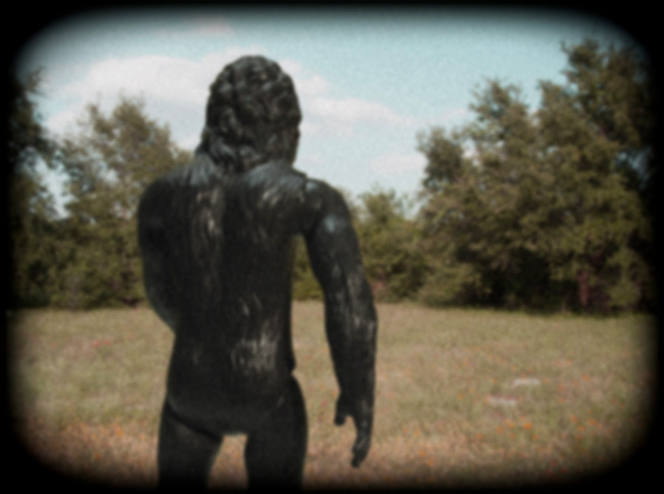Suzannah Showler’s Maisonneueve feature profiles the lives of people obsessed with the study of hidden animals, from Sasquatch to the Chupacabra.
[[{“fid”:”4421″,”view_mode”:”default”,”fields”:{“format”:”default”,”field_file_image_alt_text[und][0][value]”:””,”field_file_image_title_text[und][0][value]”:””},”type”:”media”,”attributes”:{“style”:”width: 401px; height: 298px; margin-left: 10px; margin-right: 10px; float: right;”,”class”:”media-element file-default”},”link_text”:null}]]Showler, Suzannah, “On the Trail of Ignored Beasts,” Maisonneuve, February 2014.
By Elena Gritzan
Suzannah Showler spent time with a group of “squatchers” at their annual general barbecue meeting for “On the Trail of Ignored Beasts,” and the result is a close look into the strange world of cryptozoology. Greek for “the study of hidden animals,” cryptozoologists are dedicated to find evidence of “cryptids” like the Sasquatch, Chupacabra or Yeti, though the British Columbia Scientific Cryptozoology Club (BCSCC) focuses on finding a Sasquatch. Every year, they get together over lots of meat—no one opened the boxes of cookies—to discuss new potential sightings and evidence.
They’re a colourful cast of characters, including John Kirk (who “looks like he’s been cast in a Harry Potter spinoff where Professor Snape cuts loose and goes on vacation”) and Thomas Steenburg, who drives a SUV emblazoned with the phrase “Sasquatch Research” along with his phone number. Showler manages to present their contradictory nature with playful humour. They have strong countercultural values against “The Man” of mainstream science, but they also want to be accepted as researchers in a serious field of study. It’s an isolated, unsexy endeavour to scour the woods for evidence, yet they’re searching for a mystical and fascinating target. To be a cryptozoologist is to be full of ambivalence.
For a hobby, cryptozoology requires a lot of sacrifice. Kirk estimates he spends five hours a day writing and reading what others have written, and excursions into the wild can last for days or even weeks. And since no one will pay you to do it, it has to be squeezed into the off hours and vacation time of a “real job.” Adam McGirr, BSCC’s vice-president, has spent at least $10,000 on this gear-heavy pastime: surveillance equipment, a camera, emergency supplies, wilderness tools and a gun—and he has not been at it as long as some of the others. There’s also social sacrifice. Kirk admits that many cryptozoologists end up divorced, and Steenburg’s ex-wife wished he focused on “more important things.”
So why devote so much to cryptozoology, when few alleged Sasquatch sightings occur? For many it seems like a faith, a devotion and commitment to an idea that doesn’t need hard evidence to maintain. Showler points out the similarities between cryptozoology and creationism (some Young Earth creationists even fund mission trips to find a dinosaur-like cryptid), and both believe in an individual’s right to believe in something that mainstream science does not accept.
On a psychological level, cryptozoologists are so invested in the idea that cryptids are real that they refuse to accept any evidence to the contrary. This is classic cognitive dissonance theory—evidence suggests that cryptids do not exist, but to deal with the discomfort of that knowledge, cryptozoologists dismiss the evidence rather than change their deeply held beliefs. It’s notoriously difficult to get humans to change what they believe.
Showler includes a useful analogy for this, comparing the human brain devoted to a paradigm to Auto-Tune. Every time a note is slightly out of place, the Auto-Tune changes it to fit with the rest of the prescribed notes.
Showler gets to the heart of why these men—over ninety per cent of cryptozoologists are male—are so dedicated to their hobby, and makes it the title of the piece. “On the trail of ignored beasts” is the translated title of the first book about cryptozoology, published in French in 1955, but it’s also a telling description of the creatures they’re trying to find: ignored. They’re “hoping to find the definitive proof that will earn their cryptid—and maybe themselves—a place in mainstream science,” Showler writes. Refusing to give up on a cryptid is a way of making sure no creature is ever forgotten, something lonely people can likely relate to. They chase after ignored beasts because they feel ignored themselves.
There’s a tension within the piece when the BCSCC members express their distaste for turning cryptozoology into entertainment, such as on the Discovery Channel’s Finding Bigfoot or municipal governments hosting Sasquatch-themed events. They believe these crass ventures diminish their credibility and push them further from mainstream science. It’s hard to believe, though, that anyone is reading Showler’s story for anything other than entertainment. Many readers are searching for the thrill that comes from learning about people and their obsessions.
Yet Showler presents the cryptozoologists at face value, refraining from depicting them as weirdos. She doesn’t offer her own opinion on their beliefs (even throughout a couple of scenes showing possible sightings), instead letting them tell their stories in their own words. She even includes advice Kirk gave her on the way back from the barbecue: “‘Tell the truth,’ he says. That is, after all, what he’s trying to do.” By the end of the story, you may not be convinced that the Sasquatch exists, but you will understand the people who do.
[[{“fid”:”4418″,”view_mode”:”default”,”fields”:{“format”:”default”,”field_file_image_alt_text[und][0][value]”:””,”field_file_image_title_text[und][0][value]”:””},”type”:”media”,”attributes”:{“style”:”width: 99px; height: 66px; margin-left: 10px; margin-right: 10px; float: left;”,”class”:”media-element file-default”},”link_text”:null}]]Elena Gritzan is a student in the Master of Journalism program at Ryerson University. She is the associate editor of Silent Shout and has written and edited for Demo and The Varsity.
Illustration photo by JD Hancock, via Flickr.

